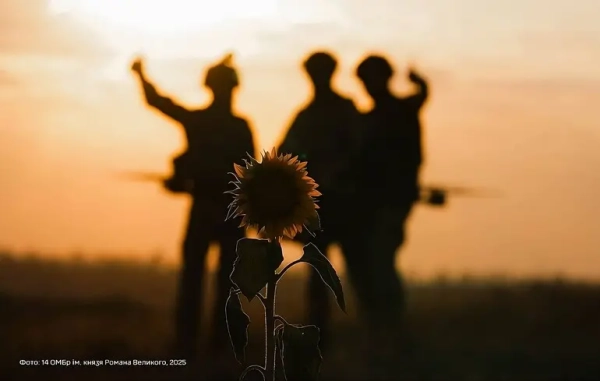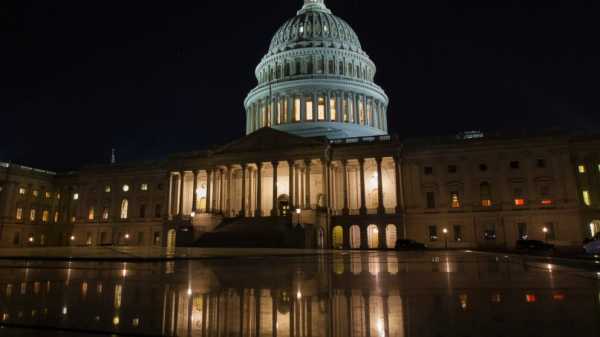
Let me introduce you to four of the most dangerous words in politics: “the good old days.”
Humans have a demonstrated tendency to remember the past as better than it actually was. It’s called “nostalgia bias,” and it can lead to us unfairly comparing the conditions of the present to some better imagined past. Memory, as the political scientist Lee Drutman wrote in a smart piece last year, is like a record store: It stocks both the hits and stinkers of the present, but only the hits of the past. “The old days were full of stinkers, too,” he wrote. “It’s just nobody replays the stinkers.”
Good News
A weekly dose of stories chronicling progress around the world.
Email (required)Sign UpBy submitting your email, you agree to our Terms and Privacy Notice. This site is protected by reCAPTCHA and the Google Privacy Policy and Terms of Service apply.
Nostalgia bias has become a bigger and bigger part of our politics, thanks in part to President Donald Trump’s largely successful ability to leverage a collective longing for a supposedly better past. (After all, it’s called “Make America Great Again,” not “Make America Great.”) But it’s hardly the domain of one party: A 2023 survey from Pew found that nearly six in 10 respondents said that life in the US 50 years ago was better for people like them than it is today.
Fifty years ago was the 1970s, and it doesn’t take too much historical research to see how that decade doesn’t match up to our happy memories. (One word: disco.) But what about a more recent, seemingly actually better decade? One that’s suddenly surfing a wave of pop-culture nostalgia? A decade like…the 1990s?
Related
- The surprising reason fewer people are dying from extreme weather
One 2024 survey from CivicScience found that the 1990s were the single decade respondents felt most nostalgic for (while the most recent decade, the 2010s, finished dead last). Nor, to my surprise, is this just the product of aging Gen X-ers pining for their flannel-clad youth — another survey found that over a third of Gen Z-ers were nostalgic for the 1990s, despite the fact most of them had not yet been born then, while 61 percent of millennials felt the same way.
As collective memory goes, these were years of steady economic and productivity growth, of reduced existential threat thanks to the end of the Cold War, and of really, really good movies. Compare that to today’s fears of AI-driven economic disruption, the renewed threat of nuclear conflict, and the general death of the movies.
Related
- Heart attacks aren’t as fatal as they used to be
But look closely, and you’ll realize that our memories of the 1990s are fatally blurred by nostalgia. Here are four reasons why the 1990s weren’t as good as the present day.
1) A far more violent country
I’ve written before about how Americans have this stubborn habit of believing the crime is getting worse even when it’s actually getting better. But holy cow, was America violent and murderous in the 1990s!
In 1991, the highest violent crime rate in US history was recorded, with 758.2 incidents per 100,000 people. And it didn’t get better for a while — 1992 holds the record for the most violent crimes in a single year, while 1993 had the highest number of murders nationally. Compare that to 2024, when the violent crime rate fell to 359.1, the lowest in 20 years and less than half the rate of 1991, while the homicide rate this year may well hit the lowest level ever. And while the 1990s as a decade saw a historic drop in crime, the violent crime rate in 1999 was 524.7 per 100,000 — still well above last year’s level.
2) A much poorer world
At the start of the 1990s, nearly 40 percent of the entire world was in a state of extreme poverty, living on $2.15 or less a day. What that meant in reality was that for almost half the world, life was lived on the edge of grinding subsistence, much as it had been for centuries, with seemingly little chance for change. In China, for instance, some two-thirds of the population was in extreme poverty. The idea that the world’s largest nation would ever become rich would have been laughable.
Today, as I’ve written before, that picture has utterly changed. Just 8.5 percent of the world’s now much larger population lives in extreme poverty, which translates to over a billion people escaping near-total destitution. While you might want to go back in time to the 1990s, I can almost guarantee that none of them would.
But it’s not just the world. The 1990s may be remembered by some as one long economic boom in the US, but real GDP produced per person has increased by 40 percent since the end of the ’90s, while real median income has increased by nearly 15 percent. Nostalgia doesn’t take into account compound growth.
3) A nearly unchecked HIV pandemic
There are countless ways in which health statistics globally have improved since the 1990s — the child mortality rate alone has fallen by 61 percent since 1990 — but the most striking one to me is HIV.
At the dawn of the 1990s the HIV epidemic looked unbeatable: The US lost 31,196 people to AIDS in 1990, and by 1995 it was the leading killer of Americans aged 25-44. Global AIDS deaths were racing toward the 2-million-a-year mark, and even when the first truly effective multi-drug cocktail debuted in 1996, it reached only a tiny share of patients globally.
Today the picture has flipped. About 30.7 million people — 77 percent of everyone with HIV — receive treatment, and global AIDS deaths have fallen to around 630,000. In 2022 there were fewer than 20,000 AIDS deaths in the US, and many cities are realistically aiming to zero out cases and deaths in the near future. There’s even real hope for an effective vaccine.
4) A less tolerant, less educated population
Though it might not seem like it in our highly polarized present moment, a number of important social attitudes have flipped since the Clinton years. When Gallup first asked in 1996, just 27 percent of Americans backed legal same-sex marriage; support now sits at 71 percent, and it has been legal throughout the country since 2015. In 1991, fewer than half of adults approved of Black-white marriages, yet by 2021 that share had rocketed to 94 percent. Together these shifts mark a dramatic expansion of everyday acceptance for LGBTQ people, interracial families, and other forms of diversity.
Opportunity gaps, while far from closed, have narrowed. Women earn about 84 cents for every dollar a man does today, up from roughly 76 cents in 1998. College attainment has surged: Only about 20 percent of adults held a bachelor’s degree in 1990, versus nearly 39 percent of women and 36 percent of men in 2022.
As decades go, the 1990s did have a lot going for them, though as someone who was in their late teens and early 20s during much of them — precisely the ages we’re most nostalgic for — you can’t take my word for it. And our current moment has no shortage of problems, including some that 30 years ago we would have considered dead and buried. But don’t let your inaccurate memories of the past distort your ability to see how far we’ve come.
A version of this story originally appeared in the Good News newsletter. Sign up here!
Source: vox.com






